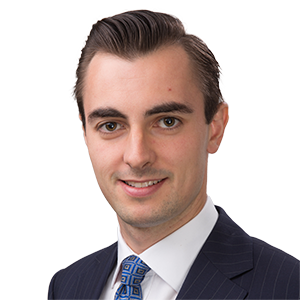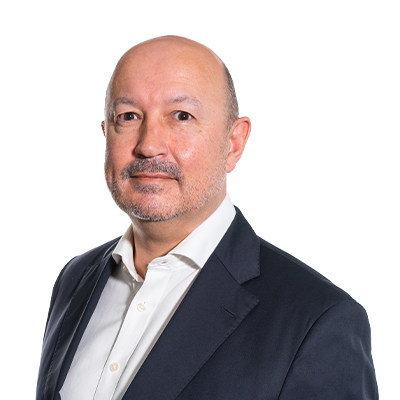What are sustainable aviation fuels (SAF)?
Across Asia, the SAF industry is being propelled by a combination of factors. Governments in the region are introducing SAF blending mandates and are considering support mechanisms to catalyse SAF production. Similarly, carbon market frameworks that allow carbon credits derived from SAF to be traded, are also being developed. These policy developments, alongside the region’s significant supply of feedstock for the production of SAF, are creating a favourable environment for SAF in Asia.
SAF are low-carbon, renewable fuels designed to power aircraft. When used, they significantly reduce greenhouse gas emissions in comparison to conventional jet fuel. There are two main types of SAF based on the type of feedstock used and conversion pathway:
- E-jet fuel / power-to-liquids (PtL): To produce e-jet fuel, renewable electricity from sources such as solar or wind are used to produce green hydrogen through the electrolysis of water. Green hydrogen and CO2 are then combined to form a gas which is converted into a form of synthetic crude oil and is further refined into e-jet fuel.
- Bio-based SAF: Bio-based SAF are produced from renewable feedstocks, such as agricultural and forestry waste, animal fats, palm oil waste, or used cooking oil (UCO). The majority of bio-based SAF are produced via the hydrotreated esters and fatty acids (HEFA) pathway, which uses fats and oils as the feedstock. Alcohol-to-jet (AtJ) bio-based SAF are produced using alcohols that can be either bio-derived or synthetic. bp has predicted that production of AtJ SAF will increase significantly, particularly in the Americas where bio-derived feedstocks such as corn grain and sugarcane exist in abundance.1
Current production levels for SAF represent less than 1% in volume of overall global jet fuel demand. SAF production doubled between 2024 and 2025 from 1 MTPA to 2.1 MPTA, but this is in comparison to current jet fuel consumption of approximately 300 MPTA.2 Demand for SAF is forecasted to be as high as 500 million tonnes by 2050 3, but the industry needs to find a way to create ‘bankable’ structures that will encourage the rapid scale-up of investment to meet growing demand. For this, the commitment of airlines and jet fuel providers to purchase SAF on long-term, stable offtake terms will be critical to unlocking the capital required to underpin the growth of the sector.
SAF certification
To ensure safety and performance, SAF must be tested to determine whether it meets the specific requirements under ASTM D7566. Once certified under ASTM D7566, the SAF can be blended with conventional jet fuel before use in aircraft, to maintain critical fuel properties for safety and efficiency.
Aircraft operators may also certify SAF under the ISCC or RSB certification schemes. Both the ISCC and RSB certification schemes provide different categories of SAF certification, depending on whether the SAF is to be used in compliance with the Carbon Offsetting and Reduction Scheme for International Aviation (CORSIA), EU RED regulation, or if it is for use in voluntary markets.
Aircraft operators can meet their carbon offsetting requirements under CORSIA if they use eligible SAF. To be eligible under CORSIA, both the ISCC CORSIA and RSB CORSIA certification schemes prescribe that the SAF used must (among other things):
- not be produced from feedstock from converted ecosystems or protected areas;
- be certified by an ICAO-approved scheme; and
- demonstrate at least a 10% reduction in lifecycle greenhouse gas in comparison to conventional jet fuel.
Notwithstanding these common requirements, certification standards can vary significantly between the ISCC and RSB frameworks, even where the certification is intended to meet the same market standard. For example, while ISCC CORSIA focuses on meeting the minimum sustainability requirements set by ICAO, RSB CORSIA goes further by incorporating broader social and environmental safeguards; for example, palm oil derivative feedstocks are not permitted without prior approval, and certain labour conditions must be complied with in the production of SAF.
These differences are particularly poignant when one comes to consider the international trade of SAF and the inherent importance of regulatory alignment in this context. As highlighted above, SAF certified under a certain category of the ISCC or RSB scheme may not necessarily be compliant with the requirements of another jurisdiction or set of applicable regulatory standards. These potential misalignments can affect the fungibility and tradeability of SAF, making the product’s certification strategy and desired route of market a critical consideration for producers and buyers alike when developing a project.
It is pertinent to note that certain of these certification schemes also require periodic re-certification of the SAF produced (be it annually or otherwise) in order to demonstrate ongoing compliance with the relevant standard, which over time may be subject to change. This also serves to create a degree of quasi “change-in-law” risk.
SAF across Asia
Across Asia, the primary production method to date has been bio-based SAF, produced from renewable feedstock such as UCO.
When it comes to SAF production, the region faces a number of opportunities and challenges. Unlocking these opportunities and overcoming these challenges will ultimately be key to catalysing the private capital and debt necessary to support the growth of the SAF sector:
- Feedstock-rich countries such as Indonesia, Malaysia, and Thailand have the natural potential to become major SAF producers but currently lack the infrastructure or support mechanisms necessary to develop SAF projects at scale. The quality and availability of feedstock also remains a universal challenge to be resolved, especially as more and more SAF projects are developed and are competing for the same feedstock sources.
- Countries with strong airline sectors such as Singapore, Korea and Japan have limited local SAF production capacity due to a lack of local feedstock supply.
- Exporting SAF across borders from feedstock-rich countries to those with strong airline sectors is expensive and logistically complex. This can also reduce the net carbon benefit due to any associated transportation-related emissions involved in the carriage of feedstock cross-border from its source to the point of production.
- Technology risk associated with certain novel methods of SAF production is making procurement models more complex. In certain instances, there is a reticence from EPC contractors to wrap the technology risk associated with the SAF production. Appropriate allocation and mitigation of technology risk within the construction package will be a key enabler of financing solutions for SAF projects.
- Regulatory risk and a lack of harmonisation when it comes to constantly changing and evolving greenhouse gas emission standards and SAF certification requirements around the world. As noted above, certification schemes for SAF can differ and are subject to change, which can lead to issues with the fungibility and tradeability of SAF.
- Monetisation of offtake remains challenging in Asia as well as globally. Much like other e-fuel technologies (including green hydrogen), there is not yet an established, wholesale market for SAF with a predictable and discoverable market price. As a result, obtaining bankable, long-term offtake agreements with airlines (either directly or sleeved through jet fuel providers) is critical, albeit challenging. Carbon markets also represent another avenue for revenue generation, although mandatory schemes across Asia remain nascent, leading to reliance on voluntary markets for the time being, which presents its own challenges to bankability. This is where other government support and incentive mechanisms can also play an important role in catalysing the development of the SAF sector. For example, in addition to SAF mandates, the UK has established an Advanced Fuels Fund, which provides grant funding to first-of-kind SAF projects. The UK government is also developing a contract-for-difference style mechanism to guarantee a fixed price for SAF over time. We hope to see similar mechanisms developed and deployed across APAC.
- Carbon intensity of certain methods of SAF production also introduces the potential need for biogenic carbon capture as a means of further reducing carbon emissions associated with SAF production and use. This can ultimately be seen as a limitation as well as an opportunity, as incorporating a carbon capture solution can both increase the cost of production while also providing an integrated source of carbon for use as part of the SAF production process.
Country snapshots
Singapore
From 2026, all flights departing Singapore must use at least 1% SAF blended with conventional jet fuel. This is set to rise to between 3% and 5% by 2030. Singapore’s SAF mandate is further supported by a passenger-based SAF levy, which is expected to be set at approximately SGD 3 for short-haul flights, SGD 6 for medium-haul flights and SGD 16 for long-haul flights4. The levy revenue will be used towards bulk SAF procurement, ensuring cost certainty and avoiding competitive distortions among airlines.
Singapore’s Neste is currently the world’s largest producer of SAF, fabricating SAF from waste material such as UCO and animal fats. Although Singapore has some local availability of UCO, the volume is not sufficient to meet Neste’s requirements. Neste’s raw materials are therefore sourced from across the world, including from feedstock-rich neighbours including Indonesia, Malaysia and Thailand. Neste has SAF production facilities in its refineries in Finland, the Netherlands and Singapore, resulting in a production capacity of 1.5 million tons of SAF per annum5. Alongside commercial airlines Lufthansa, Air France-KLM, IAG, Finnair, American Airlines, Alaska Airlines, JetBlue, ANA and JAL, Neste lists cargo carriers DHL and UPS as Neste SAF users. In May 2025, the Singapore Airlines Group (SIA) announced that it had acquired 1000 tonnes of CORSIA-eligible Neste SAF, produced in Neste’s local refinery in Singapore. In the same month, SIA announced that it had purchased 2000 tonnes of SAF from the US-based producer World Energy, utilising a book and claim system which removes the need for the physical delivery of SAF, whilst allowing SIA to claim carbon emission reduction from the purchased SAF. More generally, SIA has introduced a target of replacing 5% of total airline fuel requirements with SAF by 2030.
Indonesia
Indonesia has mandated that all international flights leaving the country from 2027 must use a 1% SAF blend, rising incrementally to 50% by 20606. Since 2021, Pertamina has been producing SAF from palm oil waste and UCO at its Cilacap refinery and has been supplying this fuel for domestic commercial flights. Despite great potential, several challenges remain for SAF production in Indonesia, including gaps in infrastructure, high production costs, and difficulties with the certification of SAF. Production of SAF from palm oil waste in Indonesia has also raised concerns around sustainability, due to the deforestation that palm oil plantations have caused. To address these issues, in 2024 Pertamina signed a memorandum of understanding with Airbus, which focuses on the development of local feedstocks, managing logistics, and compliance with international standards for SAF certification.
Malaysia
Malaysia aims to achieve a 47% SAF blend by 2050 and is considering tax incentives to attract further investment in the sector7. Petronas has formed a joint venture with Enilive (Italy) and Euglena (Japan) to build a large bio-refinery in Johor. This facility will produce SAF from UCO, animal fats, and palm oil waste, targeting both domestic and global markets. The bio-refinery is being constructed by Samsung E&A – positioning South Korea as both a technology partner and a likely customer of the joint venture. However, in a similar vein to Indonesia, there are concerns around the sustainability of using palm oil waste to produce SAF. In February 2025, the Deputy Plantation and Commodities Minister of Malaysia stated that the Malaysian Palm Oil Board (MPOB) is reviewing the policies it has in place to better distinguish exports of UCO and sludge palm oil to prevent export discrepancies. Due to increasing exports of UCO from Malaysia to the EU and US, there is also limited availability of UCO in Malaysia, although Petronas has introduced an initiative, in collaboration with the Ministry of Plantation and Commodities, to collect UCO at selected petrol stations.
Thailand
From 2026, airlines operating in Thailand will be required to use at least 1% SAF blended with conventional jet fuel. This target will increase gradually over time, aligning with ICAO’s net-zero aviation goals by 2050. Bangchak Corporation is at the forefront of Thailand’s production of SAF from UCO. Bangchak has introduced a “fry to fly” campaign, which encourages the public to sell UCO at Bangchak petrol stations across the country. In addition, the company has secured a loan equivalent to USD $190 million from UOB, leveraging carbon credits, and has established a purchase and offtake agreement of SAF with Shell International Eastern Trading in Singapore. In December 2023, Bangchak also signed a 10-year agreement with Japan’s Cosmo Oil to supply SAF derived from UCO.
Japan
Japan has introduced a target to replace 10% of conventional jet fuel use with SAF by 20308 and the government has introduced subsidies and tax incentives in relation to SAF research and production. In 2022, the “Act for Sky” organisation was established. Act for Sky involves various stakeholders including Japan Airlines, All Nippon Airways, Marubeni and Taiyo Oil, amongst others. The organisation works on the promotion and expansion of SAF production in Japan through activities such as raising awareness on carbon neutrality through local governments and education, sharing information with the group on how other countries are promoting SAF, and discussing and analysing the costs of achieving SAF goals. Whilst Japan has some UCO feedstock domestically, UCO and other bio-based feedstocks, such as agricultural and forestry waste, are generally imported to produce SAF.
South Korea
Although South Korea is one of the world’s largest exporters of conventional jet fuel, the country has introduced a mandate of 1% SAF blend for all international flights from 20279. The government has introduced tax incentives for SAF investment, and the Petroleum and Petroleum Alternative Fuel Business Act 2024 also aims to expand the development of petroleum-alternatives such as SAF. Domestically produced SAF has been utilised in Korean Air flights, and the government encourages the public to recycle UCO; however, domestic supplies are not enough to meet the demand of SAF production.
Vietnam
Vietnam’s SAF industry is still in its early stages, but the country is beginning to introduce mandates, such as a requirement for a 10% SAF blend for short-haul flights leaving Vietnam by 203510. Vietnam has an abundance of SAF feedstock, particularly from UCO and fish fat. In July 2025, Petrolimex and Singapore’s Keppel Infrastructure signed an agreement to explore the production and supply of SAF in Vietnam, marking an important step toward developing the country’s SAF sector.
Regional collaboration and the development of “green lanes”
Given the mismatch between feedstock-rich and demand-heavy countries as well as the limitations of exporting SAF, the development of “green lanes” in Asia are also being considered as a means of enabling countries with abundant feedstock to supply the carbon credits derived from SAF production to those with robust aviation industries, without the need for the physical delivery of SAF across borders.
The Green Fuel Forward initiative, a multistakeholder initiative involving airlines, fuel producers and NGOs in the Asia-Pacific region, supports the development of a book and claim system. A book and claim system would decouple physical SAF from the carbon credits. Demand-heavy markets would then be able to purchase these credits and claim the emission reduction, without having to deal with the high costs and logistical concerns of importing SAF. To implement this type of system will require transparent registries and independent verification of the integrity of SAF and credits, to prevent fraudulent activity.
Summary
Asia is at the forefront of SAF innovation, leveraging its rich feedstock resources and forging regional partnerships to decarbonise the aviation industry. While challenges remain, the region’s collaborative approach and emerging government support frameworks offer a promising path toward a more sustainable future for air travel.
We would like to thank our trainee, Tasnia Begum, at the NRF Singapore office for her contribution to this post.




